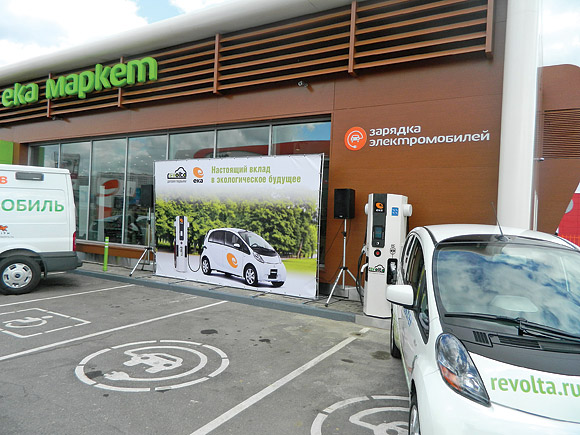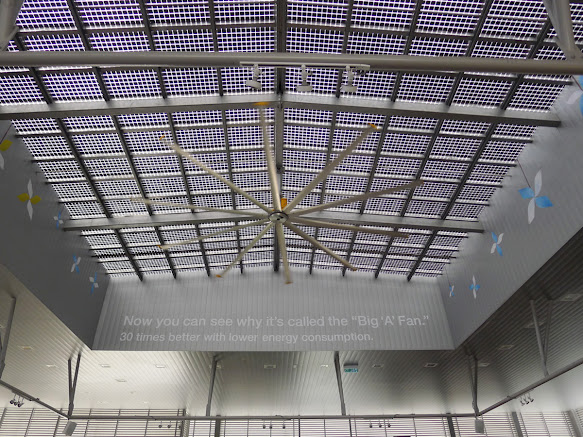 |
| Concept sketch for a single skin geodesic architecture with embedded solar PVs | © Minale Tattersfield |
- Financial in terms of reduced costs to run the eco petrol stations and therefore a lower life time cost, which should more than outweigh any higher initial expenditure or incremental capital costs to build them.
- Image / Customer reward. Early adoption of environmentally friendly technology and behaviour fits neatly with the softer, environmentally-friendly values that customers nowadays expect. Broadly speaking, research shows that, given two equal and indistinguishable looking products, the one with greater green credentials will be preferred. Commercial value is therefore highlighted by the potential for increased shop and fuel sales, plus the opportunity to offset advertising costs.
But can an eco petrol station really be credible?
We say yes. If a house becomes an eco house when it meets BREEAM or LEED standards then why not a petrol station if, it too, meets the same exacting standards?Fossil fuels are a necessary evil that, whilst vital for maintaining our economies during the transition to cleaner sources of energy, shouldn't determine how a petrol station's structures are built, or negate setting rigorous environmental objectives and quality improvement benchmarks. That said, eco petrol stations should offer alternatives to fossil fuels as they become available.
Just because petrol dispensed at a petrol station is a visible manifestation of our fossil fuel world, is it any worse than the food we air freight from countries thousands of miles away, food which is grown with the aid of petroleum-based fertilisers? Or any more objectionable than training shoes we wear, the ones with plastic rubber soles, made in factories powered by oil-fired power stations, imported by diesel powered ships, and displayed in brightly illuminated, air-conditioned shopping centres?
Since petroleum derivatives are embedded in every aspect of modern life we have to shoulder responsibility collectively (not just oil companies) by making appropriate lifestyle changes and purchasing decisions in order to drastically reduce carbon emissions and avoid irrevocable climate change.
But there lies the dilemma, for whilst we all want a low carbon world, a world which Kyoto was conceived for, oil companies (and other high carbon-based businesses) have a vested interest on behalf of their shareholders to generate profit from the billions of dollars invested in oil extraction, refining and distribution. Should oil companies be expected to promote less fossil fuel usage when their business relies upon it? Or is it governments who should dictate policy and therefore ultimately us, the public at large who should be driving change?
"We say it’s a combination of them all these factors. Some oil companies are already doing this by investing in cleaner energy technologies including renewables and some have built eco stations and therefore are beginning to redefine themselves more as energy companies rather than exclusively oil companies. We say this realignment of the role of oil companies offers the mutual benefit of a better world for us all and continued profit for the new energy companies when dependence of fossil fuels finally diminishes."If the pace of change is not sufficient, then either more government regulation is required, or in a free market, entrepreneurial lower carbon businesses will, in challenging the traditional, leaden-footed oil company, exploit the market opportunity and emerge more dominant. In fact supermarkets have been steadily eating into traditional oil company petrol station market share for many years in developed markets such as the UK and France, and will continue to do so if oil companies allow supermarkets to take the initiative on sustainability.
Eco stations on their own make a miniscule difference but have a much larger role to play in testing new technologies, plus communicating an intent to creating a better future. By demonstrating a better way of doing things, there is more chance, we as a society, can address the big challenges ahead. And by doing this in a tangible, exciting and inspiring manner through intelligent architecture, the motivation to change will be all the more powerful.
Small steps, perhaps... but steps in the right direction. So, why not profit from taking a lead? Take a look at the following eco-orientated service stations and make your own opinion.
Helios House, Los Angeles, USA
The most visible example of a LEED certified gas station is Helios House in Los Angeles. Built in 2007, the Green Station is the first LEED-certified gas station in the world and one of BP’s flagship sites until 2010. The geodesic domed canopy (see below) includes 90 solar panels, that's enough energy to power 2-3 average sized American homes per year.
 |
| Helios House first LEED-certified gas station | Image courtesy of John Picard & Associates |
Tebay Westmorland Services, United Kingdom
The nation's favourite motorway services area at Tebay in Cumbria includes a farm shop with a welcoming rustic feel to it. With a wonderful array of wholesome, locally-sourced artisan food, the shop has become a destination in itself.
Elsewhere, BREEAM certified UK forecourts may lack aesthetic appeal but functionally they are highly energy efficient. For example Sainsbury’s Local store in Huslacks Green is constructed almost entirely of recycled material and one of the most eco-friendly c-stores to date.
 |
| Sainsbury's Local store in Solihull features 42 solar panels on the roof |
 |
| Eco filling station concept design - image courtesy of Martindales |
Repsol’s sustainable service station in Madrid is a good example of a sustainable service station being the world's the first BREEAM certified petrol station. The partition walls and linings are made of cellulose fiber derived from more than 7,000 recycled newspapers, and the building is insulated by 64 kilograms of sheep's wool. The roof is made from straw and contains the proper installations to help trap and reuse rainwater for sanitation and irrigation purposes. All of the bathrooms are equipped with solenoid valves that stop excess water flow.
Autogrill opened three green roof eco stations with innovative constructions designed by Giulio Ceppi from Total Tool, Milano. Autogrill's green roof, irrigated with rain waters, makes a high level of insulation and reduces the impact the landscape.
 |
| Autogrill green roof eco station |
Socar fuel station & McDonalds in Batumi, Georgia
A giant cantilever canopy is covered in vegetation, acting as an ecological shield for the shaded terrace while also helps avoiding energy loss. Living roofs contribute to LEED points but typically incur higher initial costs.
 |
| Image courtesy of Giorgi Khmaladze (Khmaladze Architects) |
Eka was the first to launch rapid charging EV terminals. The green station which we designed is located on Moscow's outer ring road (MKAD, 26km) and puts energy efficiency at the heart of its offer.

 |
| Solar PVs mounted onto glass with large diameter Big 'A' fan |
Roadside Retails own designs are just concepts but follows a very expressive Buckminster Fuller like single skin geodesic architecture with embedded solar PV within a combination of glass and steel panels. All very doable but for a one-off it will surely have a cost implication compared to the ubiquitous twin skin flat metal canopies that everyone knows how to build with their eyes shut.
Weight of steel-wise, the dome would be less than the conventional flat designs but for glass and the glass mounting system it would certainly increase the cost, which would favour polycarbonate.
Assuming PV installed at around 1 euro per watt and an area of 400 m2, PV equates to around 40k euros capital cost with a peak power rating of 40kw. Depending on the geographical location one might obtain 73 kwh, which depending upon the local feed in tariff, may generate 14.6k euros annually.
Weight of steel-wise, the dome would be less than the conventional flat designs but for glass and the glass mounting system it would certainly increase the cost, which would favour polycarbonate.
Assuming PV installed at around 1 euro per watt and an area of 400 m2, PV equates to around 40k euros capital cost with a peak power rating of 40kw. Depending on the geographical location one might obtain 73 kwh, which depending upon the local feed in tariff, may generate 14.6k euros annually.
**
See more sustainable designs.




No comments:
Post a Comment